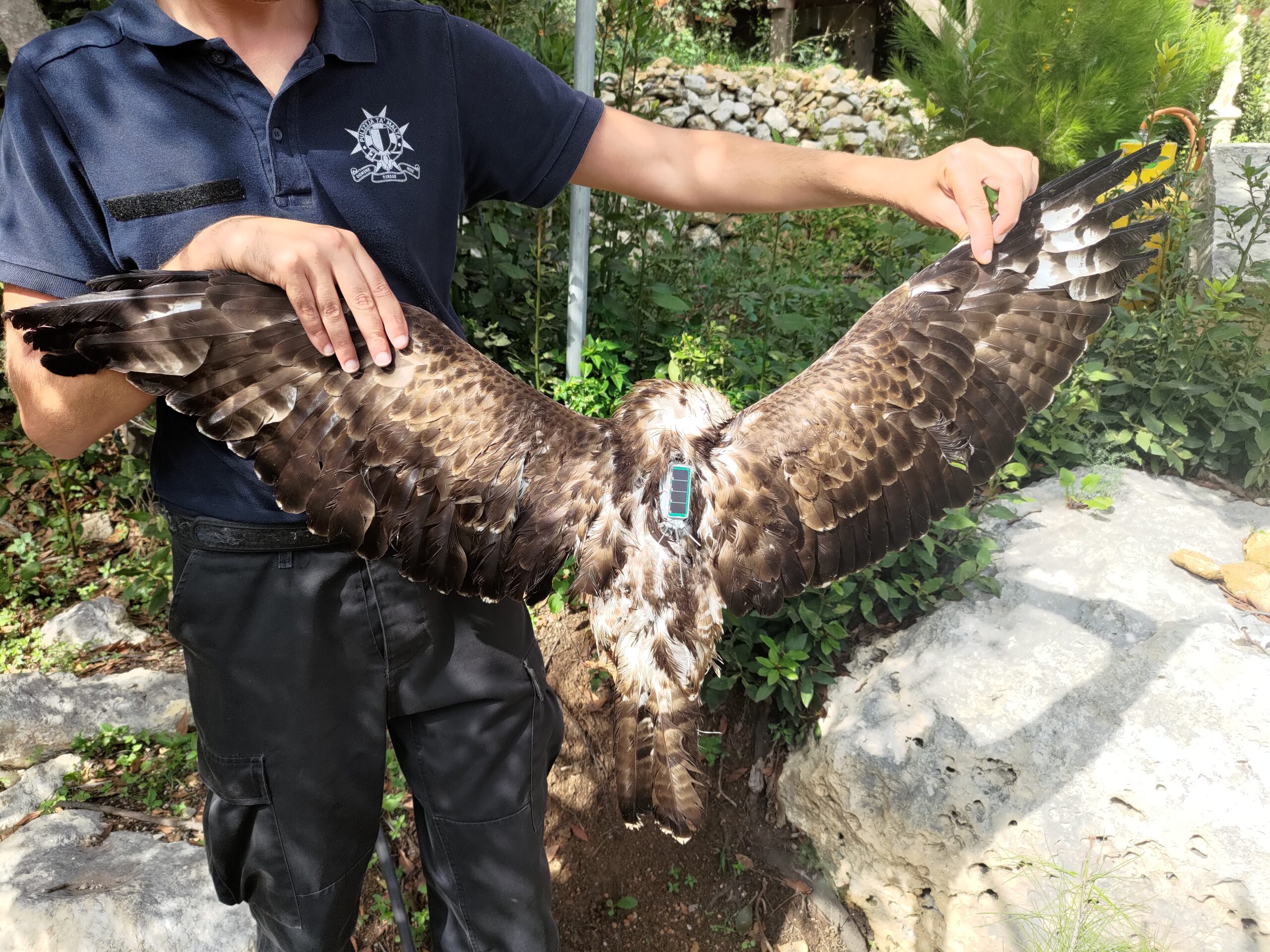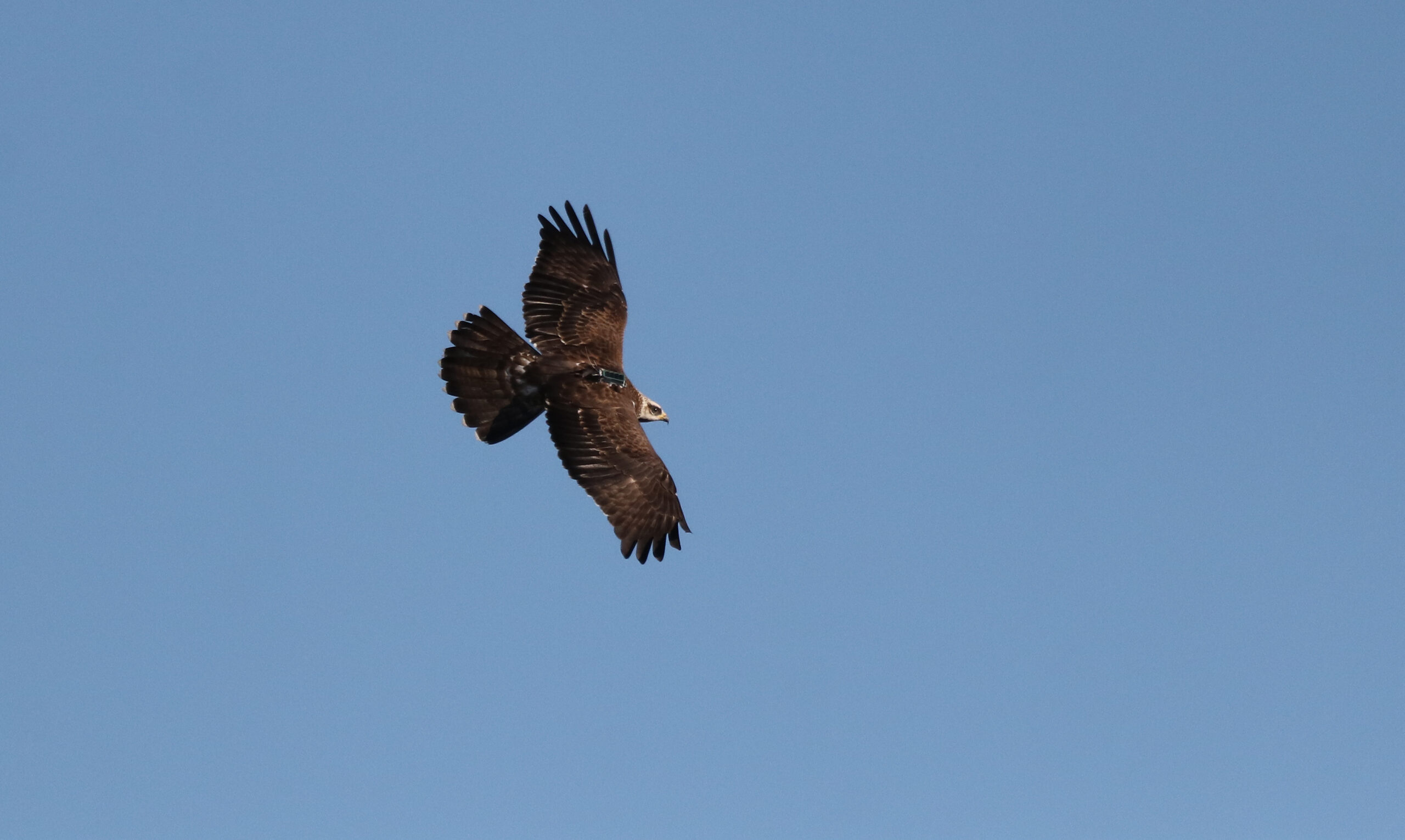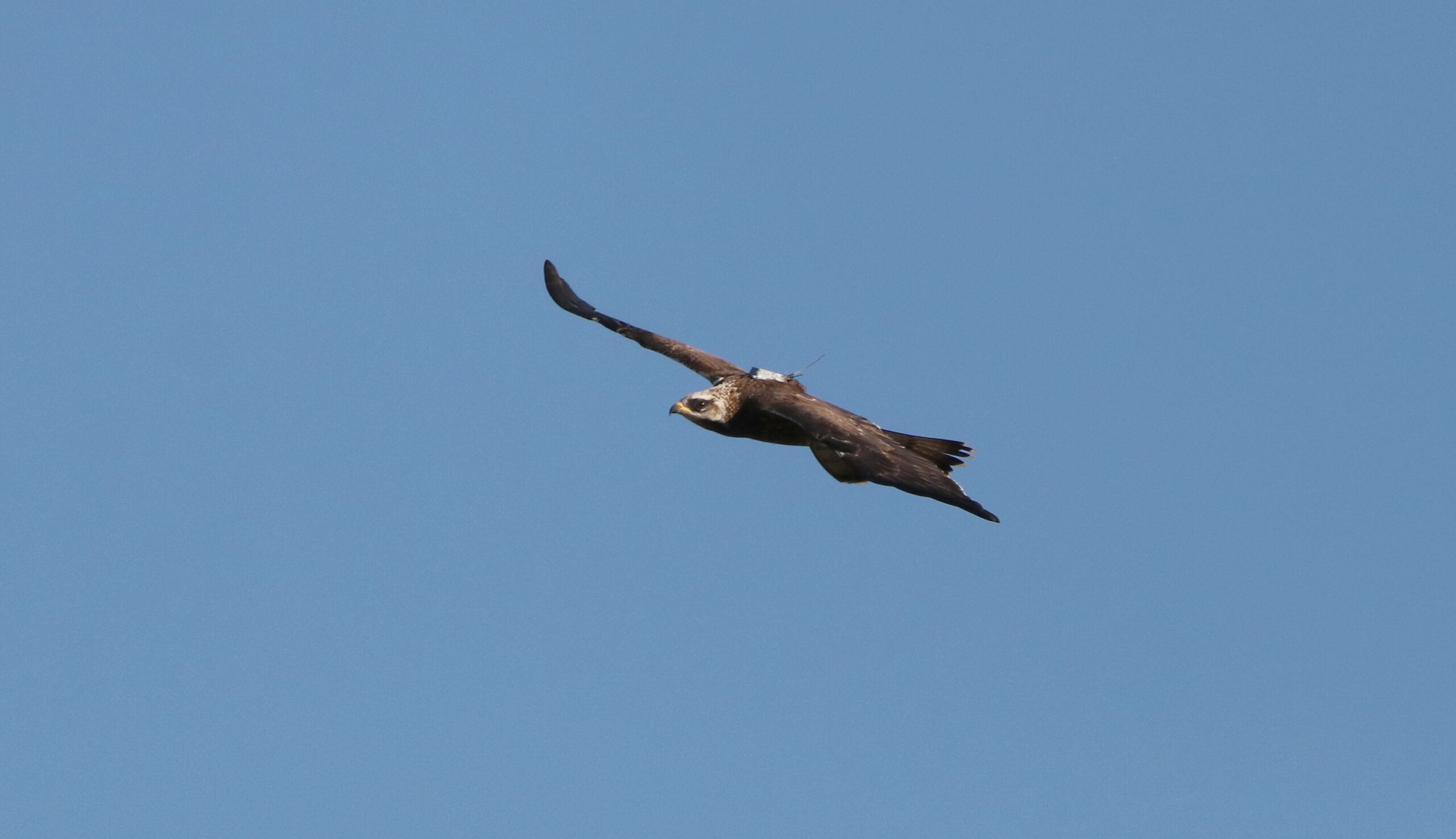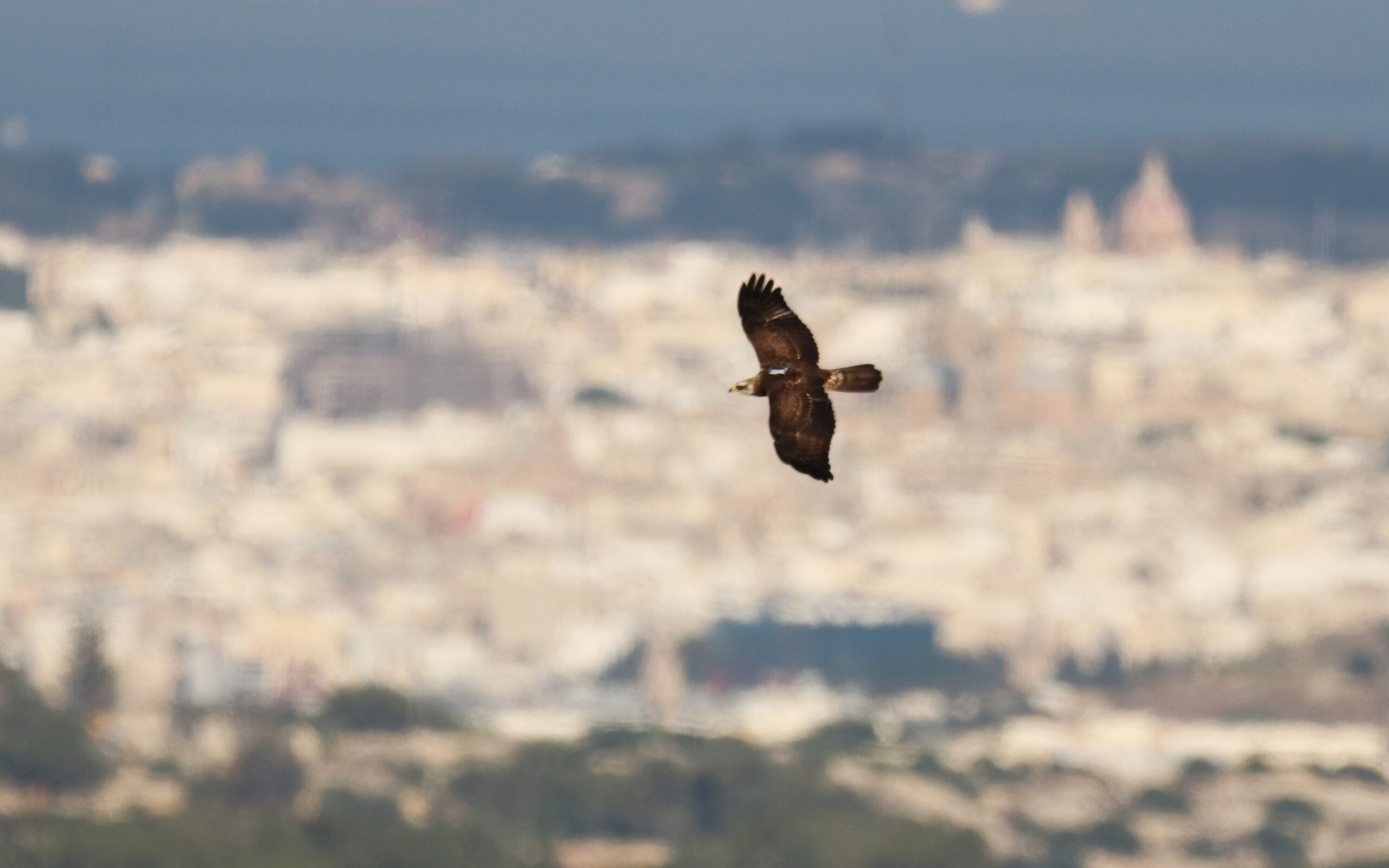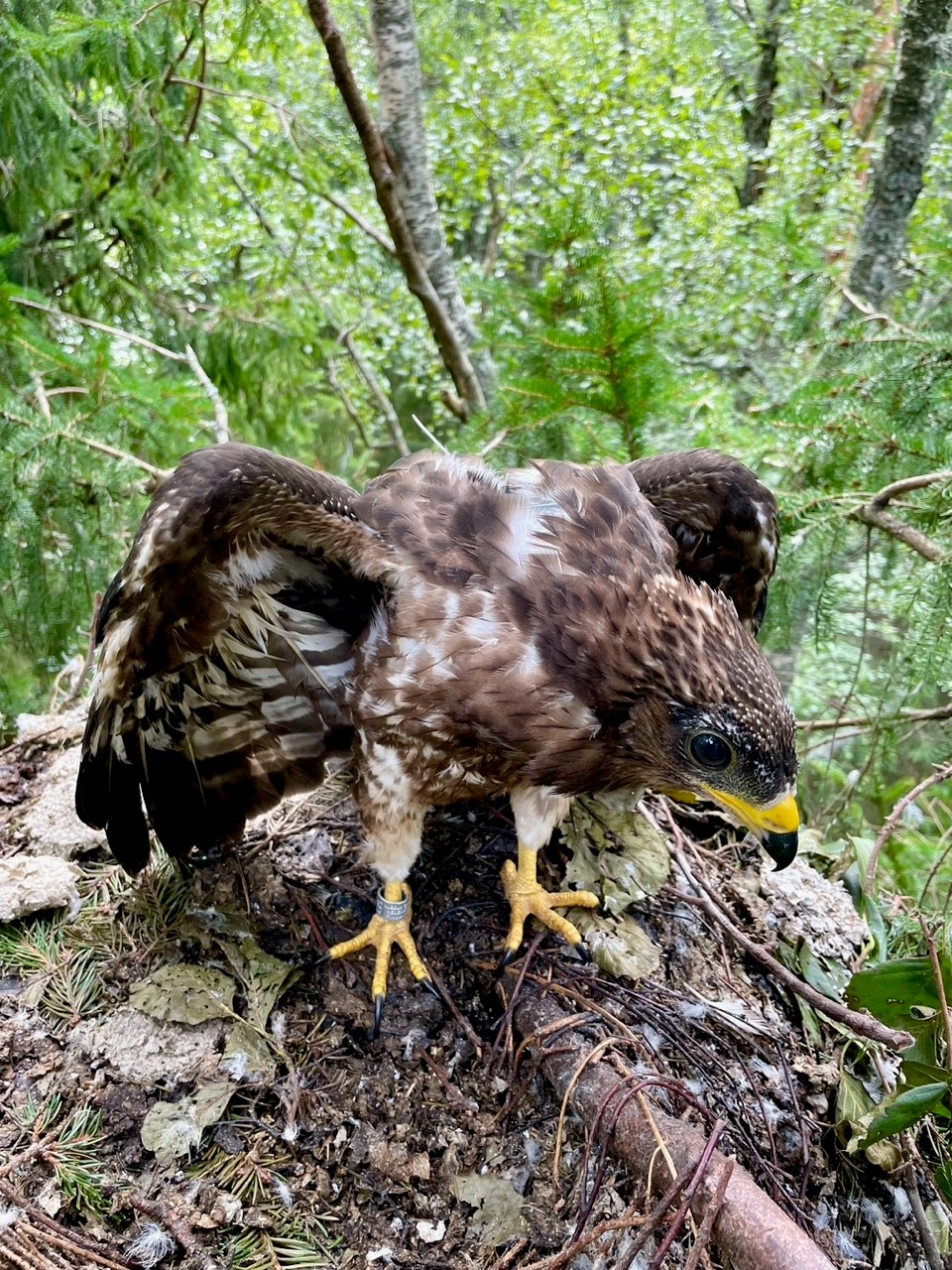A European Honey-buzzard which hatched in Finland earlier this summer and was being GPS-tracked as part of a post-doctoral research project into the migratory behaviour of Honey-buzzards, was shot down last Saturday near Rabat, Malta. An investigation by the police’s Environmental Protection Unit (EPU), assisted by officials from BirdLife Malta in collaboration with scientific researchers based in Germany and Finland, managed to track the exact location of the dead bird, retrieving the carcass of this migrant.
The juvenile Honey-buzzard, a protected species, was part of a project led by researcher Elham Nourani from the Max Planck Institute of Animal Behavior and the Centre for the Advanced Study of Collective Behaviour in Germany. Entitled “Ontogeny of soaring flight”, the study is looking into the migratory behaviour of juvenile birds leaving Finland and Switzerland and whether birds follow adults, each other or simply are guided by their own instinct and experiences. A total of 25 birds from Finland were fitted with GPS trackers by researchers Patrik Byholm and Wolfgang Fiedler, with help from Teemu Honkanen and other local bird ringers, with another six birds tagged by the Swiss Ornithological Institute in Switzerland. The study mirrors other similar initiatives led by Byholm over the years which are uncovering the spectacular journeys these birds undertake.
Carcass retrieved through collaboration between BirdLife Malta, EPU police and scientific researchers
Honey-buzzards appear in good numbers over Malta during September and October, with most birds being juveniles on their first migration south to the African content. During spring migration back to Europe, the species is observed in less numbers locally in late April to May with most birds opting to cross more easy land bridges such as the straits between Tunisia and Sicily. Birds spend their first years in tropical to sub-tropical Africa only to return to Europe as adults. Adults then undertake the annual journey between summers in Europe and winters as far south as South Africa. Through past ringing records, birds migrating over Malta are known to originate from Austria, Finland, Germany, Hungary, Poland and Sweden.
The Finnish bird owes its origin to the outskirts of the city of Turku in southwest Finland where it was ringed and GPS-tagged in its nest in typical forest habitat. Towards mid-September, the bird of prey started its journey south, first crossing the Baltic Sea to Latvia and further migrating through Lithuania, Kaliningrad, Poland, Slovakia, Hungary, Croatia and Bosnia and Herzegovina. It then crossed the Adriatic Sea reaching the Italian peninsula and continued towards the southern part of Sicily where it stopped for a few days’ rest at the forest reserve of Santo Pietro. On the 8th of October it left Sicily at around 11:30am crossing the Central Mediterranean and reaching Gozo around 3:30pm, following which it headed south towards Buskett. Birdwatchers based at Buskett sighted the bird at around 5pm.
Accurate information from its GPS tracker which was shared with BirdLife Malta after contact was made with the researchers, soon led to doubts about the bird’s welfare which stopped moving over the area of Ġnien il-Kbir outside Rabat, a few hundred metres from the Buskett Bird Sanctuary. Further information about the bird’s location was then shared with EPU officers, which led to its find in a private garden where the bird landed after it was shot down. A post-mortem examination by veterinarians confirmed the presence of large lead pellets in the bird’s body as the cause of death.
Commenting on the events uncovering the death of one of her subjects, project leader Dr Elham Nourani said, “I didn’t really know much about Malta until now. It’s remarkable how a protected species such as the Honey-buzzard is still hunted illegally in a European State. All the birds we have tracked have had no issues reaching the African continent except this one in Malta, and another bird which stopped transmitting over Cyprus.” The killed Honey-buzzard is one of two tracked birds that migrated over Malta this autumn. Another bird which was tagged from the same area passed safely over the country during the morning of the 16th of September. Having reached the island early in the day, the bird spent less than an hour soaring over the island and continued on, reaching Libya the next morning. The bird is presently located in Niger.
“The science in tracking these birds sheds light on many aspects,” commented BirdLife Malta’s Head of Conservation Nicholas Barbara. “Firstly, it shows how Malta’s position in the middle of the Mediterranean Sea is a crucial stepping stone for such long distant migrants with two out of 25 birds that left Finland coming through Malta. Secondly, it shows how much of an issue illegal hunting currently is – if this ratio is anything to go by – one of two Honey-buzzards from Finland has been killed this autumn season. Thirdly, it shows how crucially important an afternoon curfew on hunting is to reduce the illegal killing of these species – birds arriving in Malta late in the day do spend the late hours of the day looking for a place to rest and this is where they are vulnerable to shooting”.

Barbara was referring to a 3pm hunting curfew which was enforced at this time of year until 2013, when government removed this curfew to an ineffective 7pm timing when the day is practically over. The curfew had been removed to appease the hunting lobby’s opposition to it in previous years. Tracking data from the bird revealed that the bird was shot down around 5:45pm, less than an hour after it was sighted at low altitude at Buskett.
The shot Finnish Honey-buzzard is the only confirmed incident out of another two similar occurrences in Malta over the past weeks. A satellite tag belonging to an Egyptian Vulture from Italy was mysteriously washed ashore earlier this month with no trace of the bird whatsoever, while a satellite-tracked Osprey mysteriously disappeared after it left the south of Sicily earlier in September. Both birds originated from Italian conservation and research projects with whom BirdLife Malta was in touch with.
Birds of prey and especially scarce, rare or colourful species are targeted illegally in Malta for taxidermy collections. A recent change in legislation introduced by hunting Minister Clint Camilleri ahead of the general elections of last March has enabled hunters to freely trade birds in collections between them, opening up further a demand for such species. BirdLife Malta CEO Mark Sultana added: “What is clear is that Malta’s current situation with illegal hunting and the legislation purposely enacted to allow taxidermy exchanges is impacting directly a significant portion of birds coming from Europe. While most countries are trying to learn more about birds in order to help them, our country allows the illegal killing to go on. This is shameful and embarrassing, and our leaders need to tackle this problem immediately. BirdLife Malta will co-operate fully. This is not the first case where birds subject to conservation and research projects literally end up dead or disappear over Malta. The question is what we are doing as a country to stop this from happening again”.
Read the Maltese version of the press release here.
